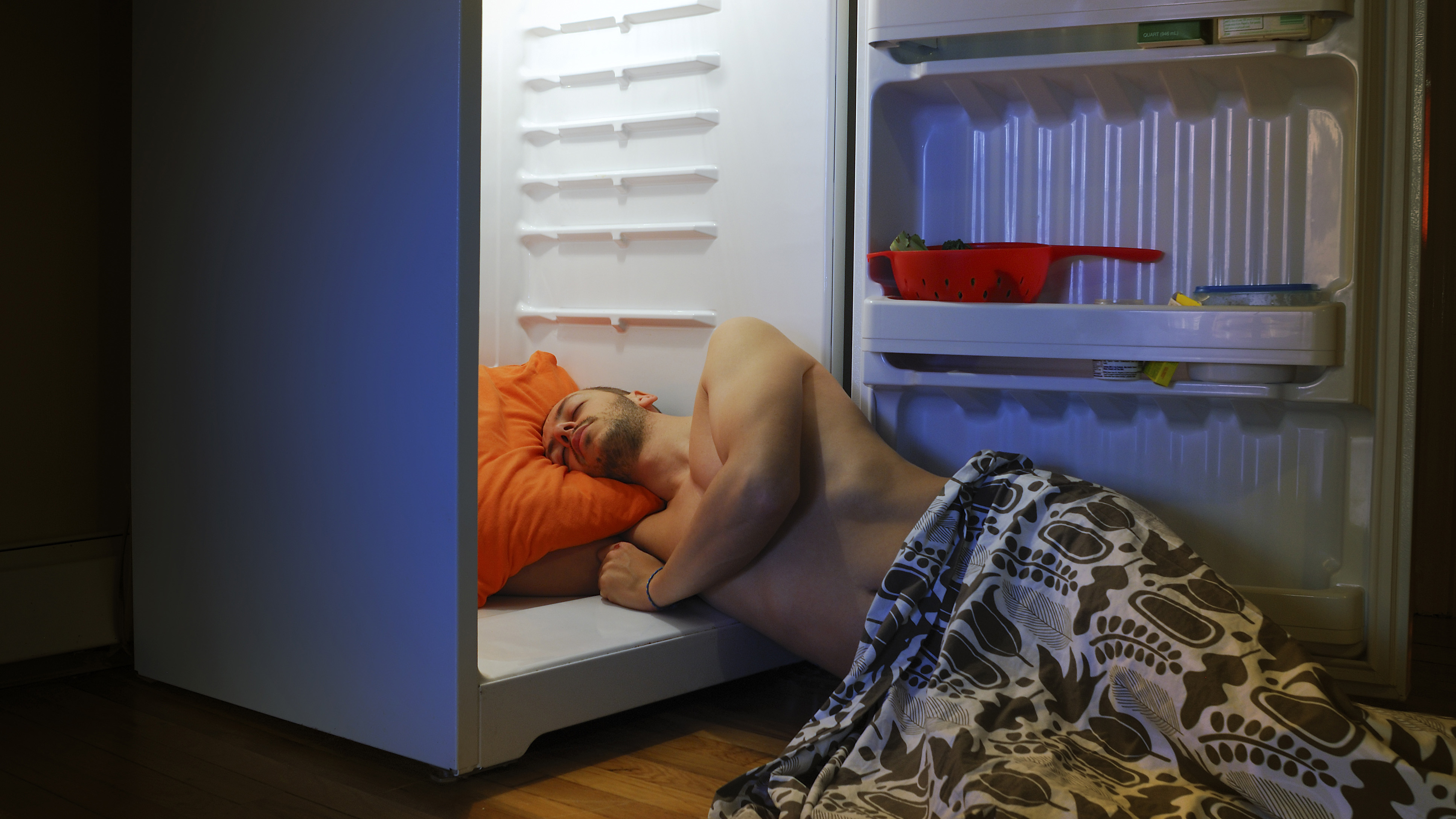[ad_1]
When you’re curled up on your best mattress, it can feel like the rest of the world simply disappears. But as comfortable as your bedding cocoon might be, if you want to get the best night’s sleep, then it’s important to consider your entire sleep environment – and that includes the temperature in your bedroom.
“We suggest maintaining a cool bedroom temperature for optimal sleep,” says James Higgins, founder and CEO of Ethical Bedding. “It supports the body’s natural dip in core temperature that occurs during sleep, promoting deeper and more restful sleep cycles.” In the bedroom, this translates to an ambient temperature around roughly 65 degrees Fahrenheit / 18 degrees Celsius.
A cooler bedroom isn’t just a way to save on your heating bills – these lower temperatures are a way to keep your environment in sync with your circadian rhythms. In this guide, we’ll take a look at why lower temperatures are better for your rest, plus some advice on how to achieve that perfect sleep environment.
What is the best temperature for sleeping?
The best temperature for sleeping is between 60 to 66 degrees Fahrenheit, (16 to 19 degrees Celsius). Our internal body temperature peaks in the afternoon, gradually lowering as we get closer to bedtime and cooling further as we sleep, before rising slowly in the morning as we prepare to wake up. When the bedroom is cooler, our body recognizes this as a cue that it’s time to sleep, while a warmer room tells your circadian rhythms to wake up.

How temperature affects sleep
Ambient temperature plays an important role in how well we sleep, so you want to avoid a bedroom that’s too hot (or too cold). A study from 2015 found that high temperatures could cause fatigue, while research from 2022 linked increased temperatures during the night to worse sleep efficiency and quality. And a 2012 2012 study concluded that temperature was a key factor in sleep quality, with heat affecting sleep stages and thermoregulation.

If you’re struggling to sleep in hot weather, try opening a window at night or using an electric fan to cool the room. Taking a lukewarm shower in the evening and drinking a glass of cold water can also help keep your body temperature down.
And consider the role your bed itself might play. A cooling pillow is an easy way to upgrade your sleep setup – we have some excellent options in our best pillow guide – or if you regularly struggle with night sweats, consider investing in one of the best cooling mattresses.
Can it get too cold in the bedroom?
Although we recommend keeping the bedroom on the cooler side – so your environment supports your body as it prepares for sleep – don’t make your bedroom frigid. “There is a point where the room gets too cold,” says Lisa Artis, deputy CEO at Simba Sleep’s charity partner, The Sleep Charity. She warns that a cold bedroom “could cause you to wake up and take a while to get back to sleep while you warm up. Especially when the outside temperature drops to its lowest in the early hours.”
Temperature, light, and comfort are all important for achieving a good night’s rest, and if your icy bedroom leaves you shivering, it will be hard to get comfortable. We have some advice on how to keep your bedroom warm without turning the heating on, so you can stay cozy during a cold snap.

And sometimes, it is better to prioritize comfort over the cooler nights. Dr Lindsay Browning, psychologist, neuroscientist and sleep expert at And So To Bed suggests that, “when you are unwell you might want your room a little hotter or cooler than ‘sleep recommendations.’ It’s always important to listen to your body and do what feels right for you.”
However, as anyone who has spent the night searching for the cooler side of the pillow can attest, a lot of the time, what your body wants is a lower temperature in the bedroom. Below, we’ve rounded up some of our favorite bedding choices for maintaining this perfect ambient temperature.
Bedding for maintaining the right temperature
For UK sleepers…
For US sleepers…
[ad_2]
Source Article Link

